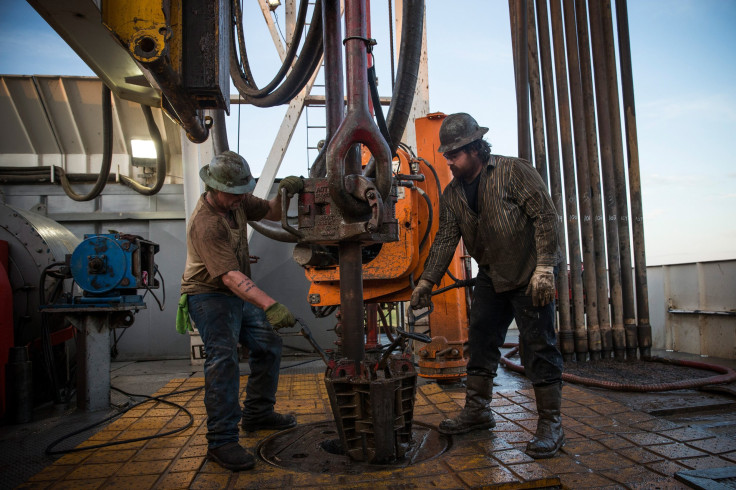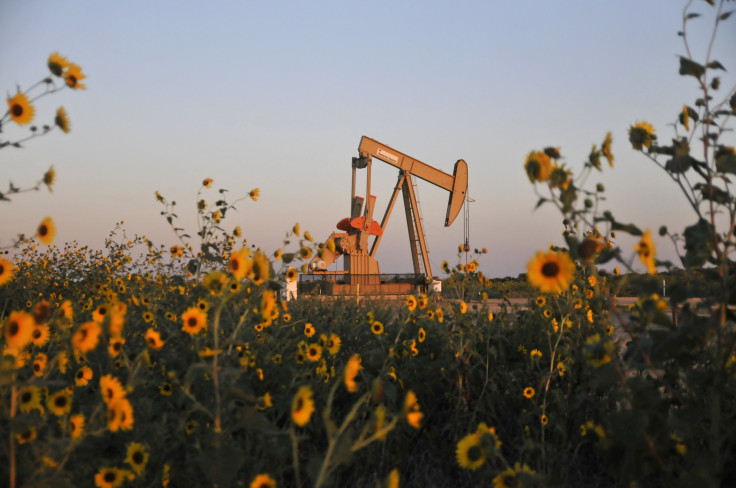Oil Price Plunge Hurting Academic Research In Energy Sector As Industry Curtails Funding

Back when oil was around $100 a barrel, scientists at Louisiana State University were preparing to study the Tuscaloosa Marine Shale, a large rock formation in the middle of the state that holds billions of barrels of crude. Oil and gas companies were eager to work with LSU to explore the shale’s geological nature and potential prospects for drilling.
Now, however, “That interest is just gone,” said David Dismukes, executive director of LSU’s Center for Energy Studies in Baton Rouge. “The outlook over the next 12 to 24 months for getting new projects in the private sector are slim to none.”
Battered by lower oil prices, the U.S. oil and gas industry is curtailing funding for research as part of a broader effort to slash costs and protect bottom lines. At academic institutions in America’s energy-rich states, the money for innovation and exploration is shrinking, according to the heads of several prominent energy schools.
Higher oil prices in recent years helped to pad the budgets of oil and gas companies and fill state treasuries with millions of dollars in tax revenue. At public universities, petroleum engineering departments and other energy research projects saw a surge in donations and grant funding for exploring shale formations, developing more efficient technologies and studying environmental impacts tied to hydraulic fracturing, or fracking.
But oil prices have tumbled by roughly two-thirds since June 2014 on fears that global oil supplies far outweigh demand for crude. The price plunge has eroded oil company earnings and drained the coffers of energy-dependent states. That leaves less on the table for scientific studies and research of petroleum and natural gas.
“This is a very volatile industry whose interests are driven by what they can afford,” said Mike Stice, dean of the Mewbourne College of Earth and Energy at the University of Oklahoma in Norman and a member of SandRidge Energy Inc.’s board of directors.
“It’s not that there’s not innovative new ideas that need to be researched,” he said. “But people’s capacity for that changes significantly with these low oil prices.”
The college’s total research dollars are only about 75 percent of what they were last year, a drop driven largely by the decline in company-driven projects, Stice said. He estimated the energy school would spend roughly $7 million this year, about 28 percent less than it did last year.
“If oil prices return, these [investments] will return very quickly,” he said. If they don’t, he added, “You could see a continued erosion of the investment level.”
Mewbourne College works with individual oil and gas companies in Oklahoma to solve particular problems with technology or geology. It also partners with groups of firms to address collective concerns, such as the sharp rise in earthquakes tied to the disposal of oil and gas wastewater. Oklahoma experienced more than 900 earthquakes of 3.0 magnitude or higher in 2015, up from just two earthquakes in 2008, before the state’s drilling boom began, according to the Oklahoma Geological Survey, a state agency housed within the University of Oklahoma.

The boom-time rise in industry-funded research in Oklahoma and at other universities has drawn criticism from environmental groups, public health advocates and other observers — particularly when it comes to studies about environmental effects or health risks from fracking. Critics have argued the corporate support threatens the legitimacy of academic research. The industry says that cash-strapped state universities would have fewer opportunities without their backing.
Even so, many energy companies are now restraining their support as their revenues drop dramatically.
U.S. oil prices plunged to a 13-year low in January, slipping below $27 a barrel, before settling around $38 a barrel this month. Dozens of U.S. drillers filed for bankruptcy in 2015, with more expected to follow suit this year. Tens of thousands of American workers have lost their jobs as companies seek to slash costs and salvage their bottom lines.
In North Dakota, where fracking exploded across the Bakken Shale, direct financial support from oil and gas companies “is almost stopped,” said Vamegh Rasouli, who chairs the petroleum engineering department at the University of North Dakota in Grand Forks and was previously a consulting engineer for Schlumberger.
“The downturn in industry has affected the department, in terms of the [research] opportunities,” he said. But he noted the 5-year-old department, which specializes in unconventional shale reservoirs, “is still getting some funding, improving the teaching and getting more people involved in the program.”
ConocoPhillips, which has a significant presence in North Dakota and Oklahoma, said it has reduced its support for academic research projects as part of spending cuts across the board. The company in February lowered its 2016 capital expenditure target to $6.4 billion, down from $7.7 billion, after posting a fourth-quarter loss of $3.5 billion.
“Given the deep drop in commodity prices, we’ve had to make substantial reductions in our capital investments and deeply cut our operating expenditures,” Daren Beaudo, a spokesman for ConocoPhillips, said by email. “We no doubt have reduced our spend on [academic] ... programs, but I won’t enumerate them.”

ExxonMobil Corp., on the other hand, hasn’t adjusted its research and development budget due to lower oil prices, spokesman Alan Jeffers said.
On top of the drop in private funding, academic programs in energy-rich states are enduring state budget cuts to higher education. The Oklahoma government, for instance, is facing a $1.3 billion budget shortfall this fiscal year, spurred by depressed oil prices. In response, the University of Oklahoma is slashing $20 million from its budget to head off anticipated funding cuts.
Stice said Mewbourne College could take a hit from the cutbacks, although he said the drop would likely be small.
Oklahoma is among the eight U.S. states that receive at least 10 percent of their gross domestic product from oil, natural gas and mining taxes. Alaska, Louisiana, New Mexico, North Dakota, Oklahoma, Texas, West Virginia and Wyoming also depend heavily on fossil fuel production for severance taxes and budget funding.
The eight states accounted for nearly 90 percent of the $18 billion in severance tax revenue raised nationwide in 2014. That amount fell 35.5 percent over a 12-month stretch ending in September as energy prices tumbled, the Rockefeller Institute of Government, a public policy research group, found in a February report.
Severance taxes in Oklahoma dropped by 33.7 percent over the 12-month period and by 31.9 percent in North Dakota, which is facing a projected budget gap of $400 million. In Louisiana, severance taxes from fossil fuels fell 22.9 percent, exacerbating the Bayou State’s existing fiscal problems, including a $750 million budget deficit projected for this fiscal year.
Dismukes, the head of LSU’s energy center, said it was hard to quantify the exact drop in the school’s funding for oil and gas research. “We are down very, very substantially” in both private support and public grants, he said.
Still, he said the university was committed to riding out the market downturn. “We’re in an energy-producing state, and a state that’s a very large energy user,” Dismukes added. “This is an area we have to be in. We’re not going to let the cyclical nature of this business change that.”
Not all energy research programs have taken a hit from lower oil prices. Universities with large endowments, or programs less dependent on partnerships with private companies, are somewhat more insulated from the downturn.
Tom Edgar, who directs the Energy Institute at the University of Texas in Austin, said his program hasn’t seen a significant reduction in grant funding since oil prices began their descent, although research projects directly funded by oil and gas projects have experienced some negative impacts. He noted that Texas, unlike most other energy-dependent states, has an estimated $4 billion budget surplus.
Mark Zappi, the dean of engineering at the University of Louisiana in Lafayette, said the school is learning how to stretch its budget and that its petroleum engineering department, among the nation’s top programs, is continuing to grow.
“With a very tight funding situation in Louisiana, the university has been challenged with cutbacks on program growth, streamlining of programs, and more seeking of industry and private donor support,” he said. “However, the university continues to grow and prosper because of strong private sector support, growing student numbers, and increased R&D funding.”
The department heads from Texas, Oklahoma and Louisiana said their programs so far haven’t suffered faculty cuts as a result of the drop in student interest and research support.
Stice said Oklahoma’s petroleum engineering department intentionally avoided hiring a flurry of new professors during an enrollment peak in 2014. That way, the school wouldn’t be stuck with a high teacher-to-student ratio during leaner times. “There’s all kinds of strategies you can do to deal with that volatility,” he said. “This will be the seventh cycle I’ve experienced in my 35 years in the industry. This is a repeating thing.”
He said there’s also a silver lining for the University of Oklahoma. Oil and gas companies are increasingly relying on the university for collective research efforts, sacrificing proprietary data or exclusive discoveries in exchange for shared — and more affordable — studies. The Oklahoma Geological Survey, for instance, has received a rising number of inquiries on seismic studies, wastewater management and well integrity from local drillers.
“As we provide those services, we get paid,” Stice said. “And so there’s an offsetting revenue stream that comes from people wanting to further research and evaluation.”
Dismukes of LSU said it is still too early to know whether the dampening effect on oil and gas research would slow innovation across the oil patch in coming years. Many universities can still tap existing, multiyear grants or endowment funds to support ongoing research and development efforts.
“It’s going to be a function of how long we stay in the downturn,” he said. “Ironically, these are the times when people double down and look for further innovative ways to deal with the problem, to try to reduce cost.”
© Copyright IBTimes 2024. All rights reserved.





















